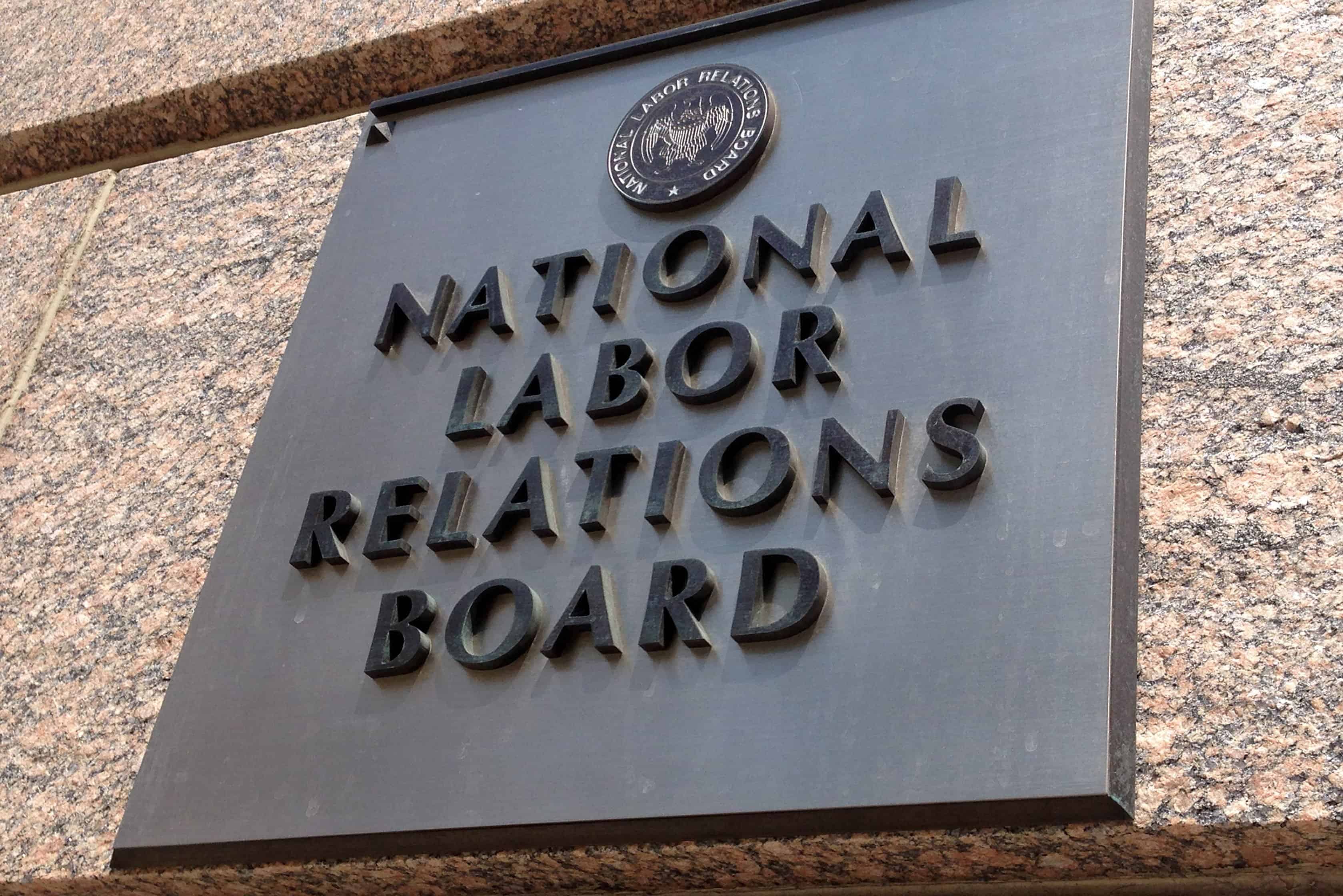
Andrew Strom is a union lawyer based in New York City. He is also an adjunct professor at Brooklyn Law School.
The Trump appointees on the NLRB have proposed a new “joint employer” rule that they claim will foster “predictability and consistency.” But, it is readily apparent that the proposed rule will not accomplish these goals. The proposed rule will, however, result in fewer joint employer findings, which is precisely the point.
Before discussing the joint employer rule, it’s important to understand why it matters. We are living in an era of what David Weil has called “the fissured workplace,” where giant powerful corporations use contracting, outsourcing, and franchising to profit from the labor of workers without taking responsibility for their working conditions. The joint employer concept allows workers in these fissured workplaces to bargain with the entities that actually have the power to increase their wages or to provide them with full-time work rather than limiting bargaining to the entity that appears on the worker’s paycheck.
The proposed rule is designed to overturn the Board’s 2015 decision in Browning-Ferris Industries of California, Inc. In Browning-Ferris, the Board recognized that, beginning in 1984, without acknowledging and addressing earlier contrary precedents, the Board had begun narrowing the circumstances where it would find two entities to be joint employers. During those thirty years, the Board never changed the wording of the legal standard – it always purported to find two (or more) entities to be joint employers if they “share or codetermine those matters governing the essential terms and conditions of employment.” But, before Browning-Ferris, the Board had announced that it was no longer sufficient for a putative joint employer to possess the authority to control terms and conditions of employment; there also needed to be evidence that it had exercised the authority. The Board had further narrowed the joint employer test by requiring that any control exercised by the would-be joint employer must be “direct and immediate,” and not “limited and routine.”
In Browning-Ferris, the Board recognized that its earlier decisions were not consistent with the common law definition of an employment relationship. Regarding the right to control, in the Browning-Ferris case, BFI retained the right to “discontinue the use of any personnel” employed by its staffing agency, Leadpoint “for any or no reason.” Where a client has the right to control, it may not always need to exercise that right expressly. As I explained once in a different context, if your boss tells you he “hopes” you will do something, you will probably do what he asks. The same goes for contractors and clients. If a client complains about a worker, the contractor will probably take action even without a direct order from the client.
The Board similarly recognized in Browning-Ferris that a client can exercise control over the day-to-day work of its contractor’s employees without directly telling them how to do their jobs. For instance, BFI established where work stations were, it determined the speed of the production line, it gave direction on when workers could stop the line, and it determined the specific tasks that needed to be completed during each shift. Experienced workers in many fields, whether they are janitors or nurses, rarely need instruction about how to perform their work. But that doesn’t mean that no one is exercising control over their work.
As soon as Browning-Ferris was announced, the business lobby and the Republican public relations machinery cranked up a phony narrative about the case creating uncertainty, and in in Orwellian twist, they claimed it would harm small contractors. The argument was rarely spelled out, but the theory was that rather than risk being a joint employer with its contractor, the large corporation would just hire the workers directly. What was particularly absurd about this argument was that the joint employer test under wage and hour law has always been much more expansive than the test used by the NLRB and the potential for liability is much greater, yet that has not stopped the fissuring of the workplace.
When Trump’s appointees took office, they quickly issued a decision overturning Browning-Ferris, but the Board was forced to vacate that decision when its ethics officer determined that Member Emanuel should not have participated in the case. As Board Member McFerran has pointed out in her dissent to the proposed rule, a different recusal standard applies to rulemaking than to adjudication and thus “the Board is perhaps able to avoid what might otherwise be difficult ethical issues.”
So, what does the new rule say? It reiterates that two entities will be joint employers if they “share or codetermine the employees’ essential conditions of employment,” but it goes on to provide that “[a] putative joint employer must possess and actually exercise substantial direct and immediate control over the employees’ essential terms and conditions of employment in a manner that is not limited and routine.” The first clue that the Trump Board Members are not actually concerned with “predictability and consistency” is their insertion of the word “substantial” into the test. How is anyone to know in advance where the dividing line is between “substantial” and insubstantial control?
The proposed rule includes a series of examples designed to lend clarity to an otherwise opaque test, but the examples leave many unanswered questions. For instance, the rule offers two examples of a client exercising some control over wages. In the first, Company B establishes a maximum reimbursable labor expense while otherwise leaving Company A free to set the wages and benefits of those employees. In the second example, Company B establishes the wage rate that Company A must pay to its employees. Under the new rule, the Board will only find a joint employer relationship in the second example. But, how much discretion must Company A possess for Company B to avoid a joint employer finding? What if, as in Browning-Ferris, Company B insists that Company A may not pay its employees more than Company B pays its own employees who do similar work
Regarding hiring and firing, there is an example of a client that has complained about particular workers and reminded its contractor of its right to cancel its contract without cause. The example states that but for the client’s input, the contractor would not have imposed discipline or would have imposed lesser discipline. In that case, the Board would find a joint employer relationship. But, what if the client didn’t include the heavy-handed reminder of its contractual right? Wouldn’t the contractor already be aware of the contractor’s power? And, once the client speaks up, how can anyone establish the counterfactual of what the contractor would have done if the client had remained silent?
If the Republican Board Members believe that the policies set forth in the NLRA would best be served by making it harder for workers to bargain with the entities that have the power to give them the raises they desperately need, the Board Members should come right out and say that. The test in the new rule is just as fuzzy as the test in Browning-Ferris – something that is probably inevitable given the myriad circumstances where the joint employer issue arises. The rule only enhances “predictability” in that it is predictable that it will be easier for corporate titans to avoid a joint employer finding.






Daily News & Commentary
Start your day with our roundup of the latest labor developments. See all
July 15
The Department of Labor announces new guidance around Occupational Safety and Health Administration penalty and debt collection procedures; a Cornell University graduate student challenges graduate student employee-status under the National Labor Relations Act; the Supreme Court clears the way for the Trump administration to move forward with a significant staff reduction at the Department of Education.
July 14
More circuits weigh in on two-step certification; Uber challengers Seattle deactivation ordinance.
July 13
APWU and USPS ratify a new contract, ICE barred from racial profiling in Los Angeles, and the fight continues over the dismantling of NIOSH
July 11
Regional director orders election without Board quorum; 9th Circuit pauses injunction on Executive Order; Driverless car legislation in Massachusetts
July 10
Wisconsin Supreme Court holds UW Health nurses are not covered by Wisconsin’s Labor Peace Act; a district judge denies the request to stay an injunction pending appeal; the NFLPA appeals an arbitration decision.
July 9
the Supreme Court allows Trump to proceed with mass firings; Secretary of Agriculture suggests Medicaid recipients replace deported migrant farmworkers; DHS ends TPS for Nicaragua and Honduras